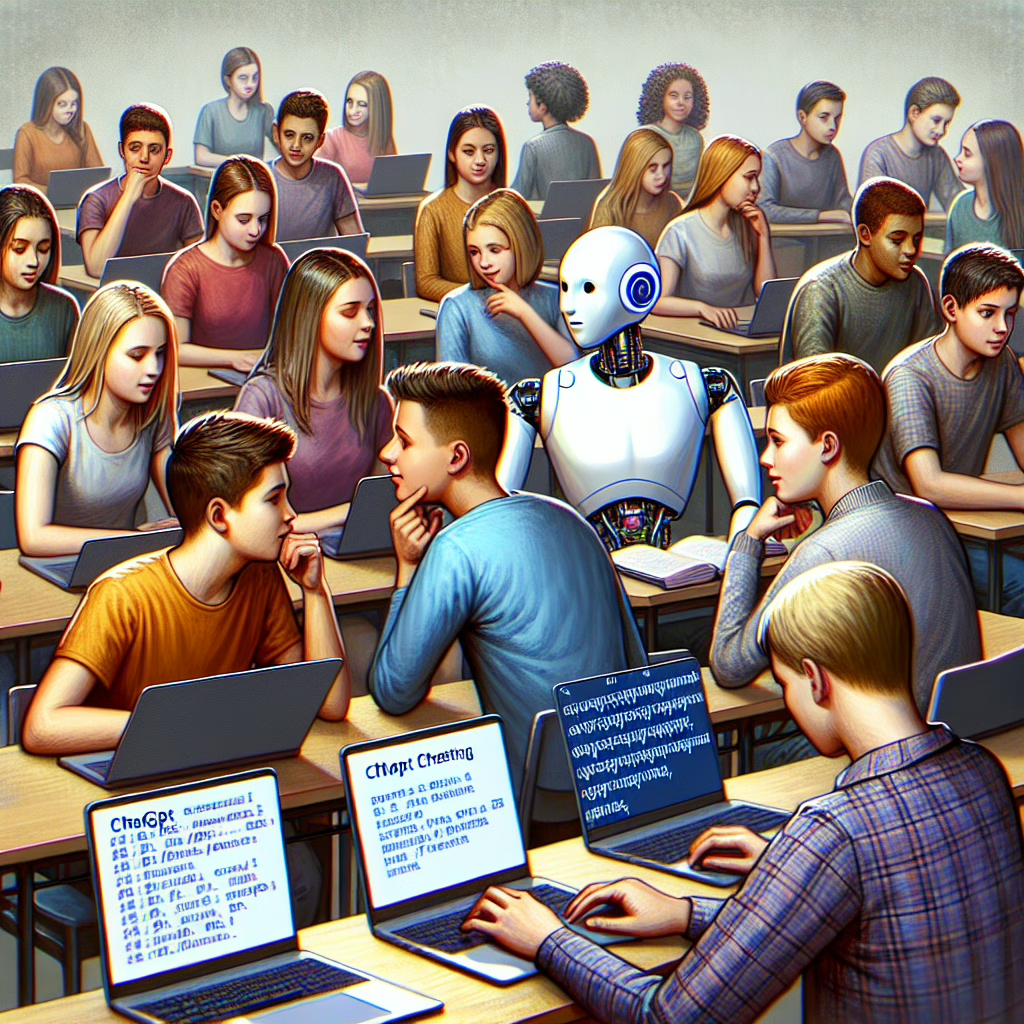In a world where students have access to ChatGPT, the line between help and cheating has become as blurred as a badly focused selfie. Educational institutions are grappling with this remarkable technology that can generate essays faster than you can say “plagiarism.” Welcome to the classroom of the future, where ChatGPT is both a helpful tutor and a potential academic villain!
ChatGPT: The Double-Edged Sword of Education
Imagine this: it’s a sunny afternoon, you’re sipping your coffee, and your student is at home, typing away on their computer. Instead of struggling with a complex math problem or agonizing over an essay about Shakespeare, they turn to their trusty sidekick—ChatGPT. This AI marvel can spit out coherent paragraphs faster than most humans can think. Suddenly, you wonder if you’re teaching students or just providing them with a subscription to the world’s best cheat sheet.
Of course, the rise of ChatGPT isn’t all doom and gloom. In fact, it brings a wave of exciting possibilities! Students can use it to enhance their understanding of topics, brainstorm ideas, or even refine their writing skills. Just imagine students diving into a Shakespearean soliloquy while having an AI buddy clarify every line! But wait—aren’t we treading into the uncanny valley here? After all, when does helpful assistance become an excuse for laziness?
The Uncanny Valley: A Philosophical Quandary
The term “uncanny valley” originates from robotics and describes how humanoid robots that look almost human can evoke feelings of unease. In education, we might find ourselves in a similar valley when considering how close AI-generated content comes to human thought processes. Do we feel discomfort when students rely too heavily on ChatGPT? Should we be worried that our future leaders are outsourcing their critical thinking to a chatbot?
It’s time for educators to embrace this shift rather than resist it. By integrating ChatGPT into learning environments responsibly, teachers can help students cultivate essential skills while using AI as a tool rather than a crutch. So, how do we achieve this harmonious balance? Let’s explore some practical strategies!
Strategies for Embracing ChatGPT in Education
1. **Teach Responsible Usage**: Just like we teach kids not to text while driving, we must guide them on using ChatGPT ethically. Encourage them to see it as a supplement rather than a substitute for their own creativity.
2. **Create Engaging Assignments**: Ditch the traditional essays that invite students to copy-paste from AI sources. Instead, design projects that require personal reflection or unique perspectives—things that even ChatGPT struggles with!
3. **Foster Collaboration**: Why not pair students with ChatGPT for collaborative projects? They could brainstorm ideas together, developing teamwork skills while making the most of AI’s capabilities.
The Future: A Harmonious Coexistence?
The reality is that technology is here to stay—like that one friend who never leaves the party. Instead of hiding from it or pretending it doesn’t exist, let’s learn to coexist with these innovations! Teachers can embrace tools like ChatGPT as opportunities for growth rather than threats to traditional education.
The challenge lies in reshaping our educational systems so they adapt to these advancements without losing sight of critical thinking and creativity. Who knew that navigating the uncanny valley could lead us to such profound discussions about learning in the digital age?
So next time you hear about cheating in classrooms due to ChatGPT, remember—it’s not just about policing behavior; it’s about rethinking how we teach and learn in this brave new world!
If you’ve enjoyed this article and want to dive deeper into the intriguing world of AI in education, don’t forget to share your thoughts below! We love hearing what you think about navigating this uncanny valley.
Special thanks to Wired for inspiring this exploration into the future of education!
Related Readings on AI and Education
- Sam Altman and Jony Ive’s ChatGPT device is probably going to look like an iPod Shuffle you can wear around your neck – report reveals more about the hyped AI hardware
- iPhone designer Jony Ive joins OpenAI, but don’t expect a new ChatGPT smartphone
- Google Search just got its biggest-ever upgrade to lure you away from ChatGPT – here are 7 new things to try
As we continue to adapt to these technological advancements, the synergy between education and AI will undoubtedly shape the future of learning. Let’s leverage tools like ChatGPT effectively and ethically in our educational frameworks!

